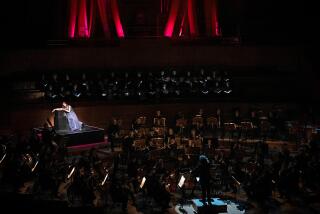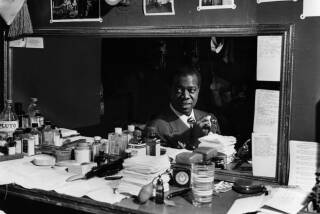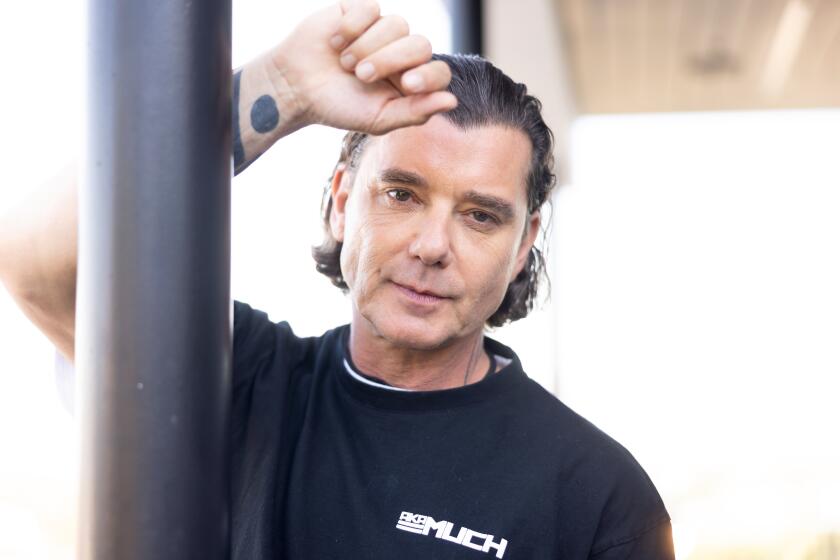Celebrating Duke Ellington at UCLA in Marathon Style
- Share via
The opening-night concert in UCLA’s three-day Duke Ellington celebration can best be described as a musical marathon. And it was a pretty good one for most of the evening--at least until it was well into its fourth hour and beginning to manifest the qualities of an endurance test.
With an ensemble of certified Los Angeles jazz all-stars on stage and the entire Ellington catalog to work with, one might have expected nothing but the best, right up to the event’s post-midnight “C Jam Blues” conclusion. And when the focus remained upon Ellington’s music in general, and the Ellington compositions and arrangements in particular, the results were splendid.
The opening portions of the concert featured authentic but still vividly alive renderings of “Take the ‘A’ Train,” “Rockin’ in Rhythm” and “The Mooche.” Soloing--here and elsewhere--by trombonist George Bohanon, trumpeter Oscar Brashear, alto saxophonist Jeff Clayton, tenor saxophonist Herman Riley, baritone saxophonist Jack Nimitz and clarinetist Gary Foster, among others, maintained Ellington’s subtle interaction between improvisation and composition.
It also was fascinating to experience a few more infrequently heard Ellington works--especially “Warm Valley” (with lovely trumpet work by Bill Berry) and the richly textured “Work Song” from Ellington’s magnum opus, “Black, Brown & Beige,” conducted by James Newton.
And there was one particularly memorable moment, when singer Herb Jeffries, 82, the only survivor of Ellington’s great 1940 ensemble, delivered an impressive version of the hit tune he recorded with the band, “Flamingo.”
Other effective vocalizing came from Barbara Morrison, who brought the packed house alive with a romp through “It Don’t Mean a Thing If It Ain’t Got That Swing,” and a concluding set by Ernie Andrews.
Rounding out the many other highlights were showcase appearances by Kenny Burrell, director of UCLA’s jazz studies program, in “Cottontail” and “Sophisticated Lady”; conducting stints by Berry, John Clayton, Gerald Wilson and Garnett Brown; a dance routine from Chester Whitmore; and drum soloing from Louis Bellson.
All of this was accomplished with less-than-adequate help from the Royce Hall audio engineers, who were late in opening the appropriate microphones for virtually every solo played by a member of the saxophone section. In addition, the musicians’ efforts to find their own dynamic balance--difficult enough for an ensemble that does not regularly work together--were too often subverted by the technicians’ manipulations of the far too many microphones on stage.
At four hours and counting, the program sometimes had the feeling of an out-of-control Academy Awards show. And one couldn’t help but wish there had been less talk, and just one more opportunity--even via a film clip--to instead hear and see Ellington doing his trademark instruction on how to snap one’s fingers and tip one’s head with the rhythm, winding up with his big smile and his heartfelt, “Love you madly.”
More to Read
The biggest entertainment stories
Get our big stories about Hollywood, film, television, music, arts, culture and more right in your inbox as soon as they publish.
You may occasionally receive promotional content from the Los Angeles Times.










